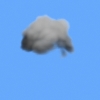Particle Shape

The Particle Shape rollout is where you define what shape you want the volumetric puffs to be. AfterBurn can use any of five different shapes as a "container" for each volumetric particle: Sphere, Cylinder, Box, Metaball and Hemisphere (Sphere must be selected for the Hemisphere option to be available.)
It also allows you to animate the rotation of the shape or to even align to the particle velocity vector.
The preview window allows you to see the final result and how it changes over the particle life.
Size
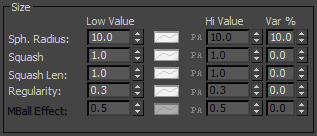
The Size group of controls affects the individual volumetric puff sizes as well as how they are oriented in relation to their emitter and motion.
Be aware that the labels within this group of controls is affected, and will change, depending on the puff shape that is chosen in the Type group of controls below. As there are four different shape types (Spheres, Cylinders, Boxes and Metaballs), the labels will adjust accordingly when each is chosen.
Sphere:
Sph. Radius - The sphere radius spinner lets you set the individual spherical puff radius. The value is in world units and can be animated over time via an AFC control.
Squash Height - This spinner lets you set a high and low value that squashes the sphere height. The value is in world units and can be animated over time via an AFC control.
Squash Len - Squash Length; lets you set a high and low value that squashes the sphere length. The value is in world units and can be animated over time via an AFC control.
Metaball:
Mb. Radius - The metaball radius spinner lets you set the individual metaball puff radius. The value is in world units and can be animated over time via an AFC control.
MBall effect - This spinner controls the Metaball effect strength when you use the HyperSolids. The smaller this value is, the smoother the Metaballs are. This spinner can be animated over time via an AFC controller.
Box:
Box Width - This spinner lets you set a high and low value for the box width. The value is in world units and can be animated over time via an AFC control.
Box Height - This spinner lets you set a high and low value for the box height. The value is in world units and can be animated over time via an AFC control.
Box Length - This spinner lets you set a high and low value for the box length. The value is in world units and can be animated over time via an AFC control.
Cylinder:
Cyl. Radius - Cylinder radius. Lets you set a high and low value of the cylinder radius. The value is in world units and can be animated over time via an AFC control.
Cyl. Height - Cylinder height. Lets you set a high and low value of the sphere height. The value is in world units and can be animated over time via an AFC control.
Squash Len - Squash length. Lets you set a high and low value that squashes the cylinder length. The value is in world units and can be animated over time via an AFC control.
Regularity - Lets you specify a high and low value of the regularity. Lower values will look more varied and sporadic, while higher values will be more uniform and fill the volume boundary more completely. The default value for regularity is 0.3, but values up to 0.5 are recommended.
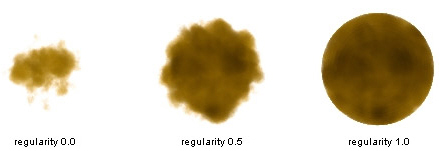
When using HyperSolids, the regularity will behave as the displacement/bump strength.
Var% - Each of the parameters within this group of controls also has a variation percentage spinner where you can cause the settings to vary from volumetric puff to puff. This introduces a more natural look to the volumetric effects since all of the particles are slightly different.
Note: Lower regularity will produce a sparser look, but it will require a higher particle count to cover the same area with higher regularity, resulting in a slower rendering time. You can also achieve a sparser look by setting a low threshold parameter to a value between 0.3 - 0.5, depending on the noise type. Play with this technique to fit your project needs and to avoid any unnecessary additional rendering time.
Rotation

This group of controls determines the rotation of the puff shape around any of its three axes. Rotation axes are aligned to the world coordinates.
If the Alignment option in the Type group of controls is set to Particle Velocity, then rotation axes are aligned to the particle velocity direction.
X - This parameter controls the rotation of the AfterBurn puff around the world X-axis. This parameter can be animated over time via an AFC control.
Y - This parameter controls the rotation of the AfterBurn puff around the world Y-axis. This parameter can be animated over time via an AFC control.
Z - This parameter controls the rotation of the AfterBurn puff around the world Z-axis. This parameter can be animated over time via an AFC control.
Var% - Each of the parameters within this group of controls also has a variation percentage spinner where you can cause the settings to vary from volumetric puff to puff. This introduces a more natural look to the volumetric effects since all of the particles will be rotated slightly differently.
Type
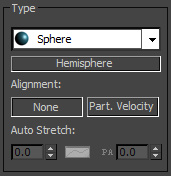
The Type group of controls determines the overall shape of the volumetric puffs. There are four different shapes to choose from: Sphere, Box, Cylinder and Metaball.
Type dropdown - This dropdown is where you determine the shape of the volumetric puffs.
Sphere - This option creates a spherical puff as shown below. The Spherical shape is the default type of volumetric puff and is good for most tasks. It also offers the option of producing a Hemispherical puff as well.
|
|
|
|
Spherical |
Hemispherical |
Box - This option creates a cube shaped puff as shown below. Be aware that when you switch between shape types, the new parameters don't automatically update. So when you switch from Sphere to Box, you'll need to adjust the Box Height and Box Length to make it appear correctly.
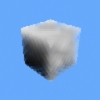
Box
Cylinder - This option creates a cylindrical puff as shown below. Be aware that when you switch between shape types, the new parameters don't automatically update. So when you switch from Sphere to Cylinder, you'll need to adjust the Cylinder Height and Squash Length to make it appear correctly.
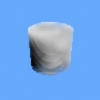
Cylinder
Metaball - This option creates metaball puffs that are used exclusively with the AfterBurn HyperSolids option. This shape type does not function with any other rendering type.
Alignment - These two options control how the volumetric puffs are oriented in relation to the particle motion.
- None - When None is selected, the AfterBurn puffs keep their original orientation unless you have specified rotation.
- Particle Velocity - When this option is enabled, the AfterBurn puffs will rotate in such a way that they will stay aligned to their travelling direction.
Auto Stretch - This spinner controls how the volumetric puffs will stretch according to the particle velocity. The higher the value of this spinner, the more elongated the puffs will become. This parameter is useful in situations where you want to create fast moving effects like explosions. This parameter can be animated over time via an AFC control.
Shape Preview Window
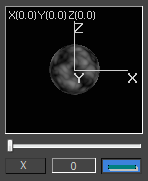
One of the benefits of AfterBurn is the options it provides you to visualize effects before
having to render. Within the Particle Shape/Animation Parameters rollout is a preview window that lets you see the overall shape of your volumetric puff.
Preview Window - The main preview window is activated by the lower button on the right (the small green bar - called the Interactive update button), and will display the overall shape of your volumetric puff along with the noise pattern that is to be applied.
Within this window, you can left-click and drag to rotate around the effect and right-click and drag to zoom in and out from the preview as shown below.
Hit Stop then Play to restart
Frame slider - Directly beneath the preview window is a narrow slider where you can preview any animation set up via the AFCs within your AfterBurn effect. The current frame is displayed below.
X - This button resets any orientation and zoom changes you've made within the Preview window.
Interactive update - This button enables the main Preview window.

